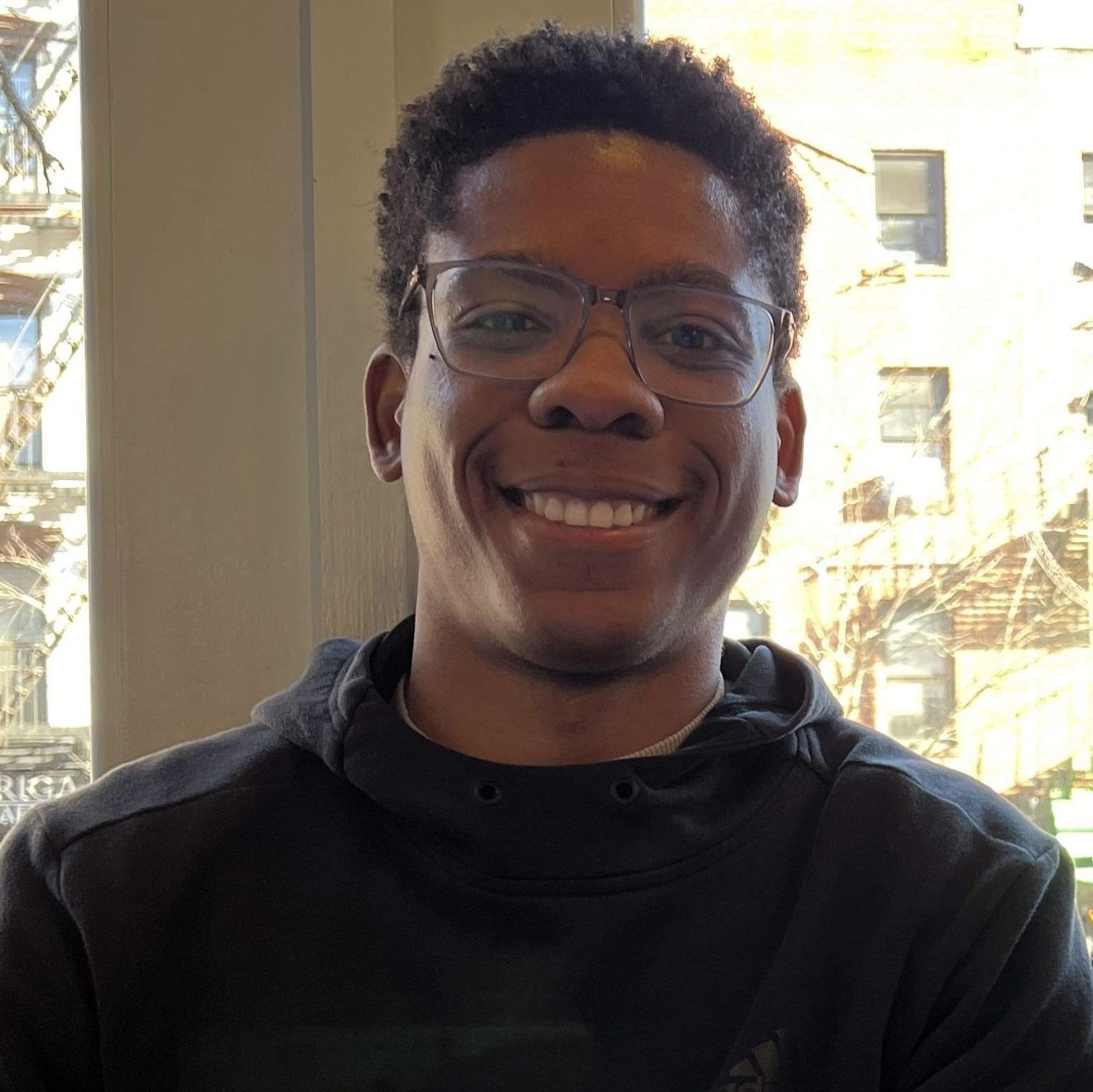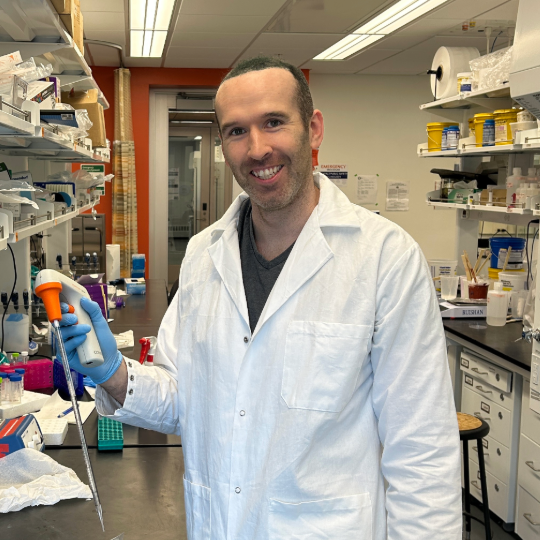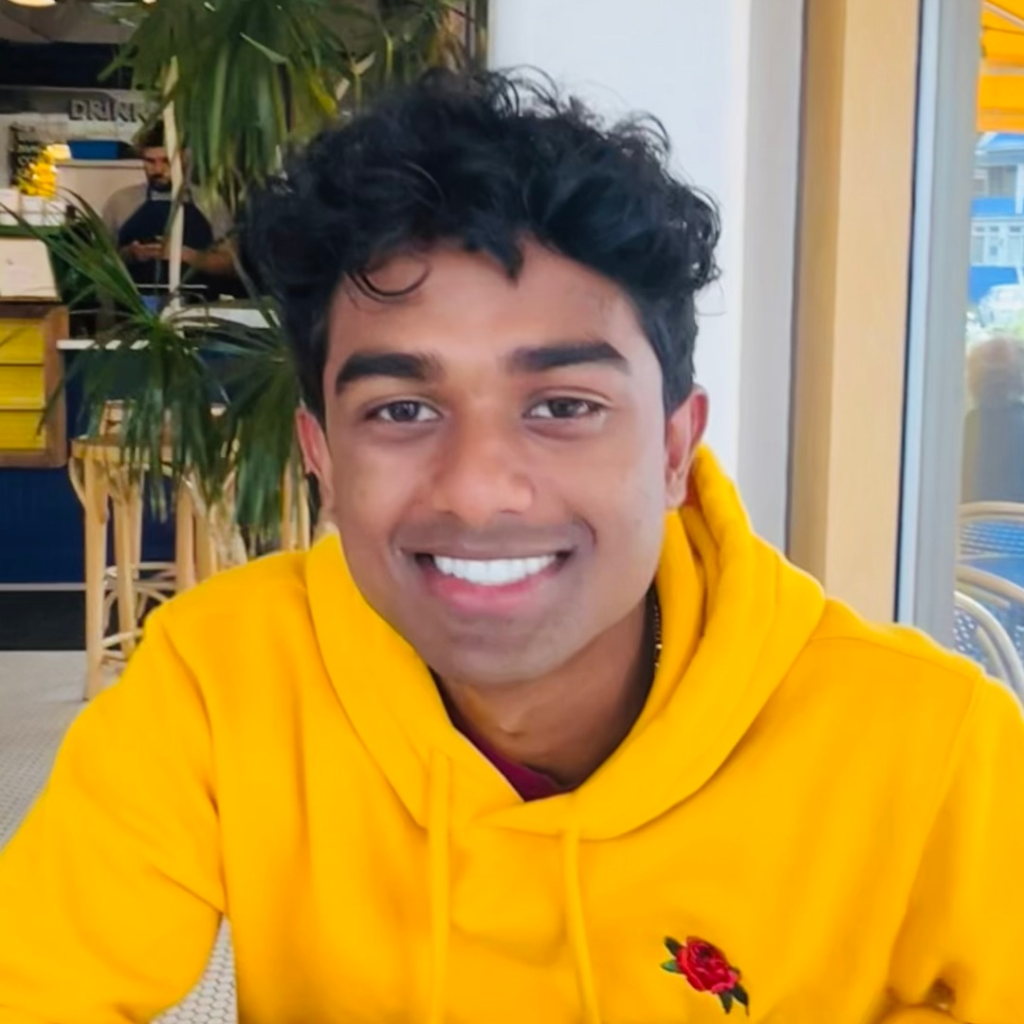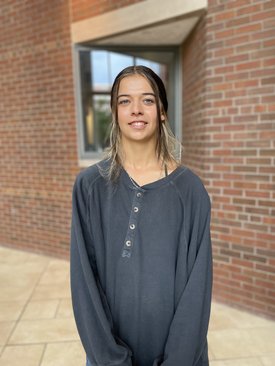
John Abili
John is a Biology PhD student in the Hougland Lab. The Hougland Lab studies post-translational modifications with a focus on prenylation and the enzyme Ghrelin O-acyl transferase (GOAT). GOAT catalyzes the acylation of the peptide hormone ghrelin with octanoyl-CoA. This reaction replaces an OH groupgound on ghrelin with an 8-carbon-containing group. GOAT and ghrelin play roles in many physiological pathways and processes, including appetite stimulation, glucose homeostasis and cardiovascular health. John’s research focuses on solubilizing GOAT and investigating its presence and activity within extracellular vesicles. Work in these areas has the potential to reveal the chemical properties responsible for GOAT’s structure and function as well as expand our understanding of how GOAT contributes to physiological processes. Click here to check out the Hougland Lab.

Jimmy Blauser-Wilson
Jimmy is a Biomedical Engineering PhD student in the Wu Lab. Jimmy is conducting immunological engineering research and is part of a team working to disguise therapeutically enhanced biomaterials with a person’s natural cellular components. The goal is to achieve highly specific drug delivery to alleviate certain autoimmune diseases. Click here to check out the Wu Lab.

Anton Jayakodiarachchige
Anton is a Biology PhD student in the Lucas Lab. Anton is investigating the human gut microbiome, with a particular focus on the dynamic interactions between host and microbes. His research centers on Mediterraneibacter gnavus (M. gnavus) and its striking ability to switch from commensal to pathogenic in the small intestine in a diseased state. Gaining a deeper understanding of the role of M. gnavus in disease progression is essential for uncovering its contribution to host–microbe interactions and potential therapeutic targets.

Abigail Stapf
Abigail is an inorganic chemist working primarily with metals on the periodic table. She is a member of the Mathew Maye lab. Her research focuses on the making of very small particles called quantum dots or rods, which are composed of a metal and a nonmetal. An interesting property of quantum materials is that they will be colored differently based on their size, so identical ‘recipes’ for quantum dots can yield different colors solely based on the size (how long the dot was heated for). Once Abigail makes the quantum dot/rod to the desired size/color she can then ‘functionalize’ the rod/dot by attaching a different molecule to its surface. After functionalization, there are a variety of properties that can be analyzed depending on the new molecule. Possible properties include, but are not limited to, light absorption of circularly polarized light and energy transfers between the molecule and the rod/dot. Click here to check out the Maye Lab.
